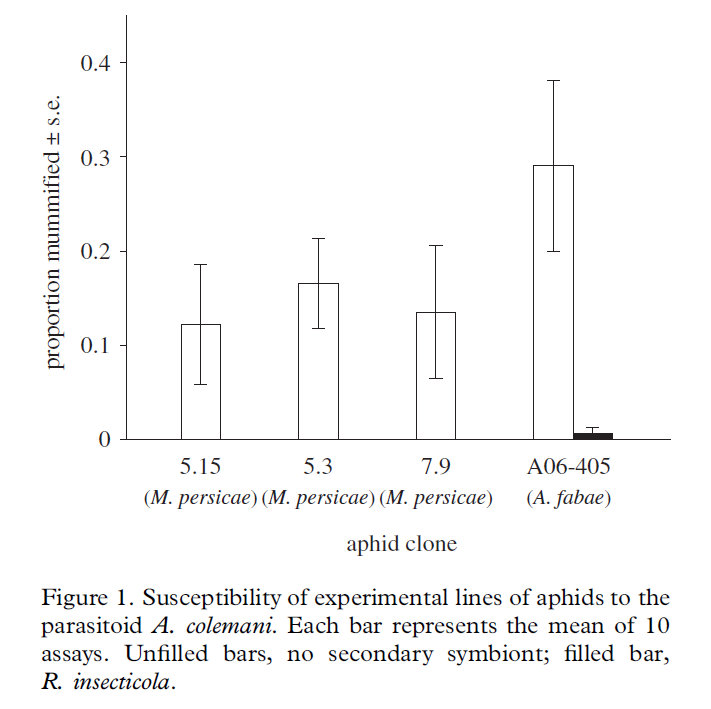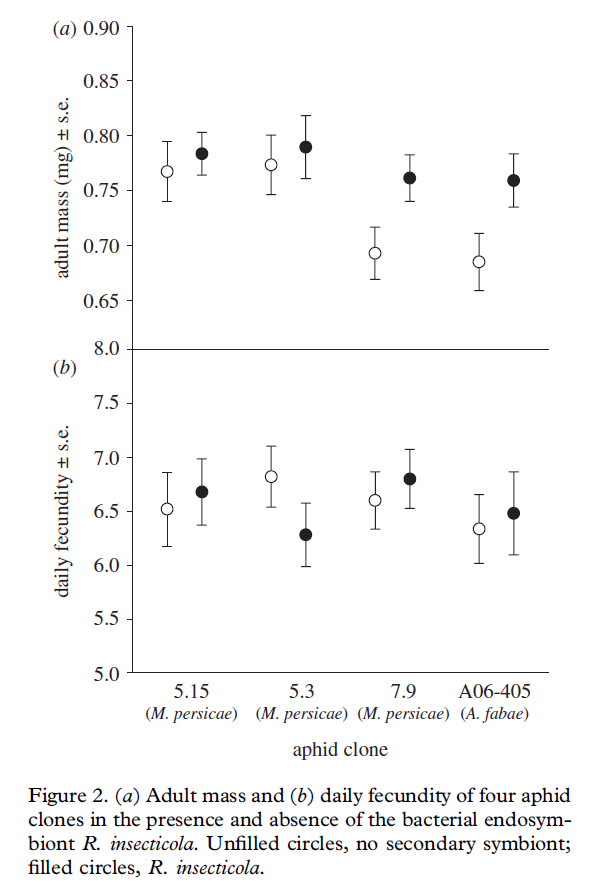
For agricultural pests aphids, parasitic wasps are an important natural enemy. The parasitic wasp injects the fertilized egg into the aphid body through the ovipositor. The parasitic bee larvae complete the development by competing with the host for nutrients in the body, and finally emerge and kill the host. In terms of agricultural control, parasitic wasps are an effective and important control method.
However, in the long evolutionary process, aphids cooperated with symbiotic bacteria in the body, for example: pea aphid usually contains two types of symbiotic bacteria Hamiltonella defensa, Serratia symbiotica, which can help pea aphid deform the parasitic bee larvae in the body, causing the larvae to die Thereby increasing the resistance of aphids to parasitic wasps. Ferrari and Scarborough found that Regiella insecticola can help the pea aphid to resist parasitic fungi and provide a little resistance to the parasitic wasp Aphidius eadyi. In 2008, von Burg discovered that Myzus pericae, an Australian peach aphid, contained R. insecticola infections and significantly increased resistance to parasitic wasps. However, whether this resistance is determined by the genetics of the green peach aphid or commensal bacteria remains unclear.
In this study, Christoph Vorburger et al. isolated R. insecticola from the green peach aphid and transferred the bacteria to the non-bacterial green peach aphid and bean aphid by microneedle injection technology, and then artificially accessed the aphidius colemani, observed The difference between the infected aphids and the control group and record the adult body weight, the formation rate of the stiff aphid (a phenotype after the aphids are parasitized), and the progeny reproductive rate indicators to determine whether R. insecticola can provide aphids with resistance to parasitic wasps . Among them, aphid clones that were not infected with commensal bacteria were injected with 0.2 mg/ml gentamicin to eliminate bacterial infections, and R. insecticola 16S rRNA primers were used to monitor the reinfection of bacteria in the offspring.

Christoph Vorburger et al. proved that the bacteria can indeed help aphids to resist the parasitism of aphid cocoon bees by isolating R. insecticola bacteria in the peach aphid in Australia. But in other aphid populations, most R. insecticola strains do not have anti-parasitic function. Taking H. defensa as an example, Oliver et al. found in 2009 that the bacterial strains that can provide resistance to parasitic wasps are related to the bacteriophage APSE that can encode toxins in bacteria, but in the above R. insecticola strain, PCR does not The presence of APSE has been detected, and of course, the presence of unknown or APSE variant phages is also unknown. In other aphid groups, R. insecticola infection does not cause a decline in host reproductive rate and life expectancy. In this experiment, the R. insecticola bacterial strain discovered by Christoph Vorburger et al. will lead to a serious decline in the reproductive rate of infected hosts after successfully resisting the invasion of parasitic wasps.


Source: Vorburger Christoph, Gehrer Lukas, Rodriguez Paula. A strain of the bacterial symbiont Regiella insecticola protects aphids against parasitoids.[J]. Biol. Lett., 2010, 6: 109-11.
https://doi.org/10.1098/rsbl.2009.0642